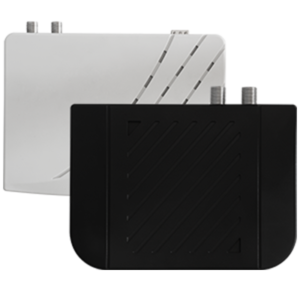
Glossary
We understand that you may not always know the technical terminology that suppliers use. We also know that understanding what your care home/hospital truly needs is of great importance. Therefore, we have a glossary list that will help you understand what you need better.
In addition, if you require further help, please feel free to contact our team.
Coax
Coaxial cable is a transmission line for radio frequency signals. Its applications include feed lines connecting radio transmitters and receivers with their antennas, computer network (Internet) connections, digital audio, and distributing cable television signals.
Ethernet-Over-Coax (EOC)
Ethernet over Coax (EOC) is a technology that supports the transmission of Ethernet frames over coaxial cable. In other words, the devices feed IP signals into existing coax cable networks to distribute Internet across the building.

Headend
A control centre in a cable television system where various signals are brought together and monitored before being introduced into the cable network.
IPTV
From a TV watcher’s point of view, IPTV is very simple: instead of receiving TV programs as broadcast signals that enter your home from a rooftop antenna, satellite dish, or fibre-optic cable, you stream them (download and play almost simultaneously) through your Internet connection. Not the kind of connection you have today, which can probably handle only 1–10 Mbps (million bits per second—roughly the amount of information in an average novel entering your computer every second!), but a broadband line with about 10 times higher bandwidth.
Screen Mirroring
Screen mirroring allows you to mirror your mobile device’s content to your TV screen.
Miracast
Miracast is a standard for wireless connections from devices (such as laptops, tablets, or smartphones) to displays (such as TVs, monitors or projectors). We can roughly describe it as “HDMI over WiFi”, replacing the cable from the device to the display.
Streaming
Streaming media is multimedia that is constantly received by and presented to an end-user while being delivered by a provider. It is an alternative process in which the end-user obtains the entire file for the content before watching.
Pay TV
Television broadcasting in which viewers pay by subscription to watch a particular channel.
Set-top-box
A box-shaped device that converts a digital television signal to analogue for viewing on a conventional set, or that enables cable or satellite television to be viewed. You can also use it to run a TV system software in cases where the TVs are not compatible with the software directly. For example, if the site has domestic or entry level TVs, which are not compatible with any TV software.
Find out Why using a Domestic TV in a Commercial Environment is a Bad Idea?
Premium Content
This refers to 3rd party content which is paid for either by the hospital/care home, and offered free to patients, or paid for directly by the patients.
VOD
Video on demand (VOD) are systems which allow users to select and watch/listen to video or audio content such as movies and TV shows when they choose to, rather than having to watch at a specific broadcast time.
Get In Touch...
Please, feel free to contact us, whether it be for a site survey, or for a quote. We have more to offer than you may think we have.
Contact us...
Get in touch now by using our online enquiry form or via phone or email.
- +44 (0) 844 870 8908
- info@healthcaretvcompany.co.uk
- 253 - 255 Great Lister Street, Birmingham, B7 4BS